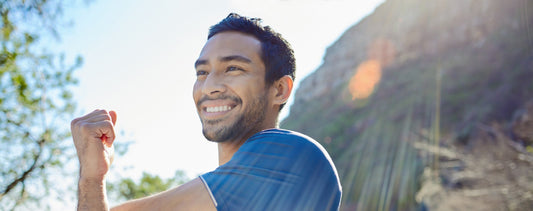Disease is an obstacle in the way of being able to identify with our true Self. To overcome this obstacle, the sophisticated science of Ayurveda offers many solutions to roga (disease) through Dravyaguṇa karma, the practice of Ayurvedic Pharmacology.
Dravya means substance, and every substance on earth can be used medicinally depending on the guṇa, the qualities or attributes of the substance, along with the karma, the action of the substance. Depending on the guṇa and karma of the substance, one or multiple of the three doshas can be pacified and a desired outcome can be aspired. Dravyam can be used to either nourish or cleanse the tissues. No substance is considered inherently “good” or “bad,” but depends on for whom, when, and how much. Everything can be medicine if it is used properly.
The plant kingdom offers endless varieties of healing properties through herbs and spices. By gaining a simple background on the methodology of how herbology works from an Ayurvedic perspective, one can better understand this profound healing system of ancient medicines.
Ayurvedic herbs are generally broken down into the following classifications:
Qualitatively, a fresh herb is more potent than a capsule because the flow of prana (vitality/life force) is stronger, and thus the plant has more intelligence to act within our body. Similarly, on an energetic level, herbs in Ayurveda are considered more effective when used with intention, as one herb can have multiple uses. Using herbs mixed into formulations with alike actions can also increase the potency of a specific effect. It is said that “a medicine should always be accompanied by love and prayer.” This activates the spiritual healing that should accompany all physical or mental ailments, without which no protocol is complete.
The timing of when an herb is taken is another aspect which will affect the potency and action of the herb on the body. For instance, taking an herb on an empty stomach first thing in the morning will be stronger than taking an herb after a meal. Another factor in Ayurvedic herbal treatments is the anupāna, or the medium through which an herb is given. Different herbal carriers, such as water, milk, honey, ghee, aloe vera, teas, and buttermilk, are all mediums that can be used skillfully to assist an herb in working on a specific tissue, channel, or dosha. Anupānas like milk and aloe are best for Pitta, whereas Kapha will benefit from the scraping effect of honey.
By becoming familiar with the methodology of Ayurvedic herbal healing, we can be one step closer to nourishing and maintaining ourselves properly on our healing journey to the Self.
A dear teacher once said, “an herb can change your life,” which I have found to be true time and time again. May our intuition open the doorways of listening to the plants that guide us in our transformation towards healing, health, and light.
*This article is dedicated to the Vaidyas and healers who have guided me with their knowledge of herbs.
Disclaimer: Always consult with your primary care physician before supplementing with any Ayurvedic herbs.
Dravya means substance, and every substance on earth can be used medicinally depending on the guṇa, the qualities or attributes of the substance, along with the karma, the action of the substance. Depending on the guṇa and karma of the substance, one or multiple of the three doshas can be pacified and a desired outcome can be aspired. Dravyam can be used to either nourish or cleanse the tissues. No substance is considered inherently “good” or “bad,” but depends on for whom, when, and how much. Everything can be medicine if it is used properly.
The plant kingdom offers endless varieties of healing properties through herbs and spices. By gaining a simple background on the methodology of how herbology works from an Ayurvedic perspective, one can better understand this profound healing system of ancient medicines.
Ayurvedic herbs are generally broken down into the following classifications:
- Rasa means taste, juice, plasma, or essence. There are ṣaḍrasa, six tastes recognized in Ayurveda: sweet, sour, salty, bitter, pungent, and astringent. Taste is determined by the pañca-mahā-bhūta, or elements present within the substance. Medicine can fall into one of two broad categories: building or cleansing. Sweet, sour, and salty are the heavy tastes and considered bṛṃhaṇa, the anabolic tastes which build tissue and rejuvenate. Bitter, pungent, and astringent are the light tastes that are considered laṅgana , or catabolic and cleansing in nature. Western diets are often lacking in the ladder three tastes, thus many times, the tastes of strong medicines are bitter, pungent, and astringent herbs, as they cleanse impurities from the body. When anabolic, or building treatment is needed, the tissues can be nourished with sweet, sour, and salty taste through food and diet. The rasa of a substance can change depending on whether it is cooked or raw, ripe or unripe, dry or fresh, etc.
- Vīrya is the energetic effect of an herb. Vīrya can be either heating or cooling. A heating vīrya will increase circulation and metabolic capacity, decreasing Vata and Kapha doshas. A cooling vīrya will decrease inflammation, soothe, and moisten the channels, benefitting Pitta dosha.
- Vipāka is the post-digestive effect of an herb, or how it effects the tissues after digestion. This is the long term of an herb on the body (in contrast to rasa, which has an immediate effect). There are three categories of vipāka : sweet, pungent, and sour. Herbs that have a sweet vipāka will nourish and moisten the tissues. Herbs with a pungent vipāka increase dryness and lightness in the tissues. Sour vipāka is less common and increases digestion, heat, and moisture in the body.
- Guṇa is the quality of a substance. There are 20 guṇas, or 10 pairs of opposites mainly used to categorize sensory experiences, foods, and herbal substances. The guṇas of a substance will indicate the therapeutic use of the herb. The 10 pairs of opposites include: heavy/light, dull/sharp, cool/hot, oily/dry, slimy/rough, fluid/dense, soft/hard, subtle/gross, stable/mobile, clear/cloudy. Each guṇa has an increasing or decreasing effect on doshas, thus the law of opposites is applied in the practical therapeutic application of guṇas. Since “like increases like,” the first step is to identify the problematic qualities present, then use the opposite guṇa to relieve the issue.
- Prabhāva is the mystical action of a plant, and a plant’s affinity to heal a specific condition. Regardless of the rasa, vīrya , and vipāka of an herb, some substances have an exceptional therapeutic effect which break the rules. For example, lemon and lime are both sour in taste (rasa), yet lemon has a heating vīrya, while lime has a cooling vīrya, making it beneficial for pitta. Prabhāva is the unique intelligence and healing ability of a plant, for which conventional classifications and categories in western medical terms may not exist. For example, keeping a fresh Tulsi plant in the home is said to heal on a vibrational level and increase love in the heart of the home dweller.
- Karma is the action of an herb in the body. For example, herbs which have a dīpana action will increase appetite and digestive fire. Herbs with a pācana action will burn ama or clear toxins. Herbs classified under hṛdaya will act as a cardiac tonic.
- Dhātu is the tissue that the herb is targeting. There are seven dhātus, tissues, according to Ayurveda: lymph, blood, muscle, fat, bone, nerve, and reproductive tissue. Specific herbs can have an affinity for one or multiple tissues. Tulsi is beneficial for the lymphatic tissue, while Neem is beneficial for the blood and fat tissues.
- Srotas are the channels that the herbs work on, such as the circulatory system, urinary tract, colon, digestive tract, etc. Specific herbs can be used for toning or cleansing a bodily channel, for example, diuretic herbs in CCF Tea help cleanse the urinary tract (mūtravaha srotas). Ginger is wonderful for activating the digestive tract (annavaha srotas).
Qualitatively, a fresh herb is more potent than a capsule because the flow of prana (vitality/life force) is stronger, and thus the plant has more intelligence to act within our body. Similarly, on an energetic level, herbs in Ayurveda are considered more effective when used with intention, as one herb can have multiple uses. Using herbs mixed into formulations with alike actions can also increase the potency of a specific effect. It is said that “a medicine should always be accompanied by love and prayer.” This activates the spiritual healing that should accompany all physical or mental ailments, without which no protocol is complete.
The timing of when an herb is taken is another aspect which will affect the potency and action of the herb on the body. For instance, taking an herb on an empty stomach first thing in the morning will be stronger than taking an herb after a meal. Another factor in Ayurvedic herbal treatments is the anupāna, or the medium through which an herb is given. Different herbal carriers, such as water, milk, honey, ghee, aloe vera, teas, and buttermilk, are all mediums that can be used skillfully to assist an herb in working on a specific tissue, channel, or dosha. Anupānas like milk and aloe are best for Pitta, whereas Kapha will benefit from the scraping effect of honey.
By becoming familiar with the methodology of Ayurvedic herbal healing, we can be one step closer to nourishing and maintaining ourselves properly on our healing journey to the Self.
A dear teacher once said, “an herb can change your life,” which I have found to be true time and time again. May our intuition open the doorways of listening to the plants that guide us in our transformation towards healing, health, and light.
*This article is dedicated to the Vaidyas and healers who have guided me with their knowledge of herbs.
Disclaimer: Always consult with your primary care physician before supplementing with any Ayurvedic herbs.






















